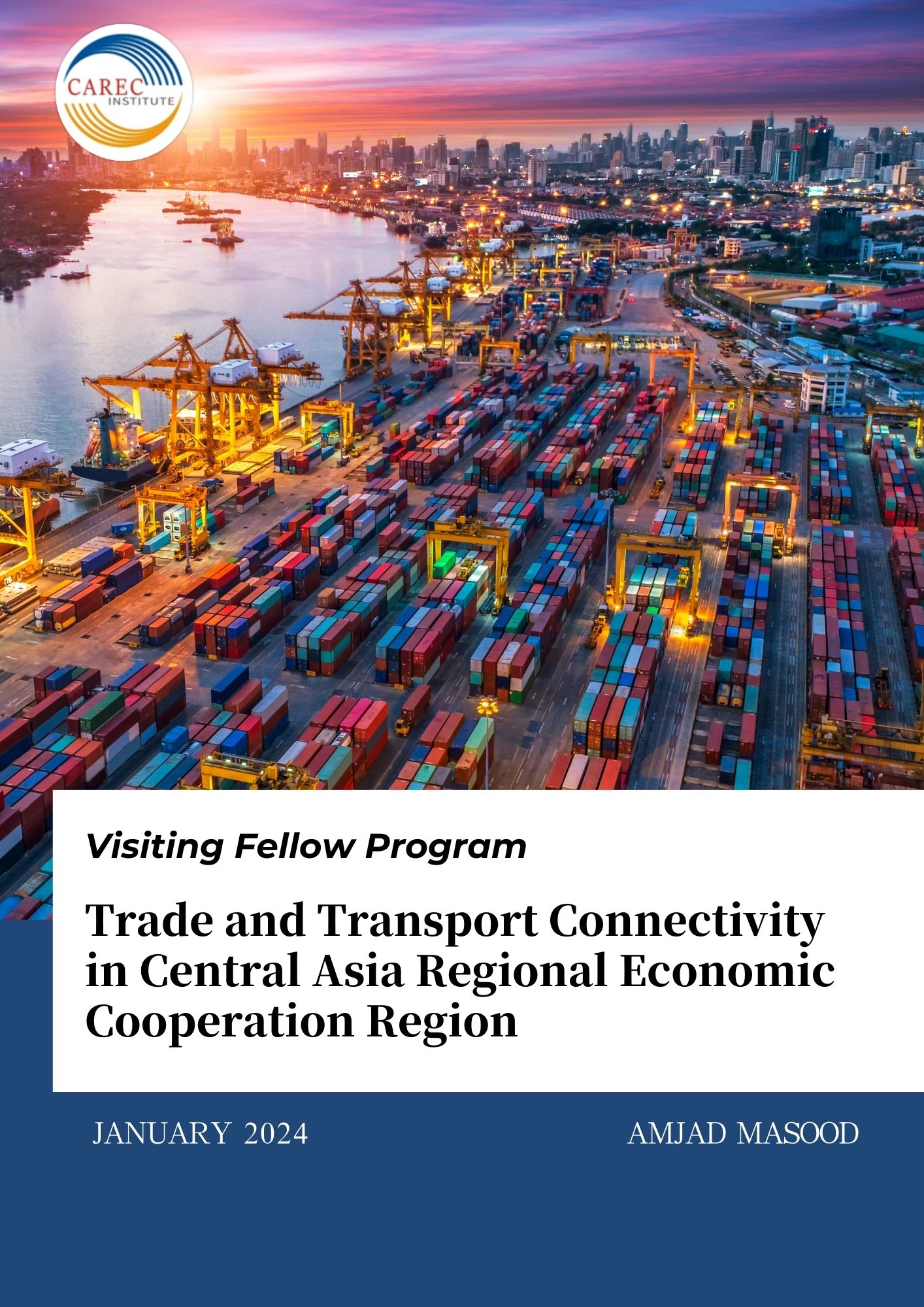Visiting Fellow Paper: Trade and Transport Connectivity in Central Asia Regional Economic Cooperation Region
CAREC Institute Visiting Fellow Program paper “Trade and Transport Connectivity in the Central Asia Regional Economic Cooperation Region,” authored by Amjad Masood, examines regional trade to explore the potential for enhanced CAREC regional integration through bilateral trade.
The study formulates the Segmental Transport Comparative Efficiency (STCE) framework, a novel approach to analyze the comparative efficiency of bilateral transport connectivity within the region. The findings indicate significant variation in the comparative efficiency of transport connectivity among different country pairs in the region. Some countries face extended delays at border crossing points or slower speeds owing to inferior infrastructure quality, resulting in longer transit times. For example, Pakistan and Afghanistan display relatively poor connectivity with other regional countries, primarily attributed to longer border clearance procedures. Conversely, China stands out for its more efficient connectivity, largely owing to its infrastructure facilitating higher average travel speeds. These disparities in the comparative efficiency of bilateral transport connectivity among regional countries have implications for the trade of various products. Notably, the competitive efficiency of the trade in fruit and vegetables ranks the lowest. In this way, the STCE framework serves as a valuable tool for pinpointing areas requiring policy support to enhance trade flow within the CAREC region.
Furthermore, the study discusses how transport costs impact specific products within regional trade. In this context, the study examined HS four-digit products within the textile sector. These products were categorized into raw cotton, yarn, and fabrics based on their level of value addition. The calculations highlight a significant disparity in the relative transportation cost as a proportion of commercial value. Specifically, transportation costs are three times higher for yarn and five times higher for raw cotton when compared to fabrics.
